Discussing the Relationship Between Masculinity and Femininity
VerifiedAdded on 2023/06/12
|5
|926
|254
Essay
AI Summary
This essay delves into the concepts of hegemonic masculinity and emphasized femininity, examining their historical roots and contemporary manifestations. It defines hegemonic masculinity as a form of masculinity that establishes a hierarchy, positioning men as superior to women and those who do not conform to its norms as inferior. Emphasized femininity, conversely, is presented as a concept that reduces women to serving men's needs, including sexual validation, childbearing, and household duties. The essay references Virginia Woolf's and Dorothy L. Sayers' literary works to illustrate these concepts and critiques them through the lens of feminist theories, particularly Judith Butler's notion of gender as a social construct. It argues that while societal views have evolved, vestiges of these ideologies persist, perpetuating gender inequality and the subjugation of women, advocating for a fundamental shift in social frameworks and individual mindsets to foster true gender equality. Desklib provides access to similar essays and resources for students.
1 out of 5
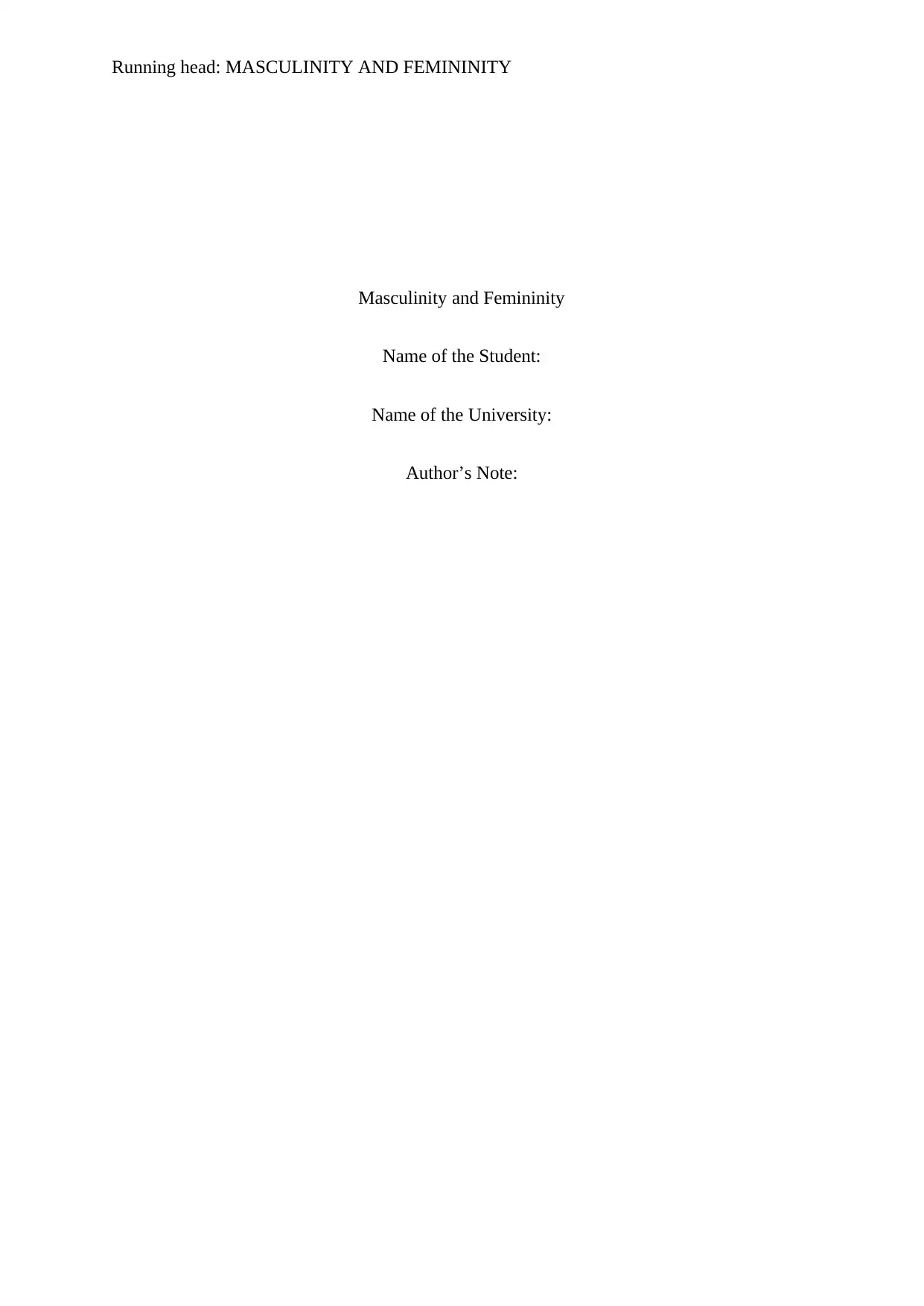
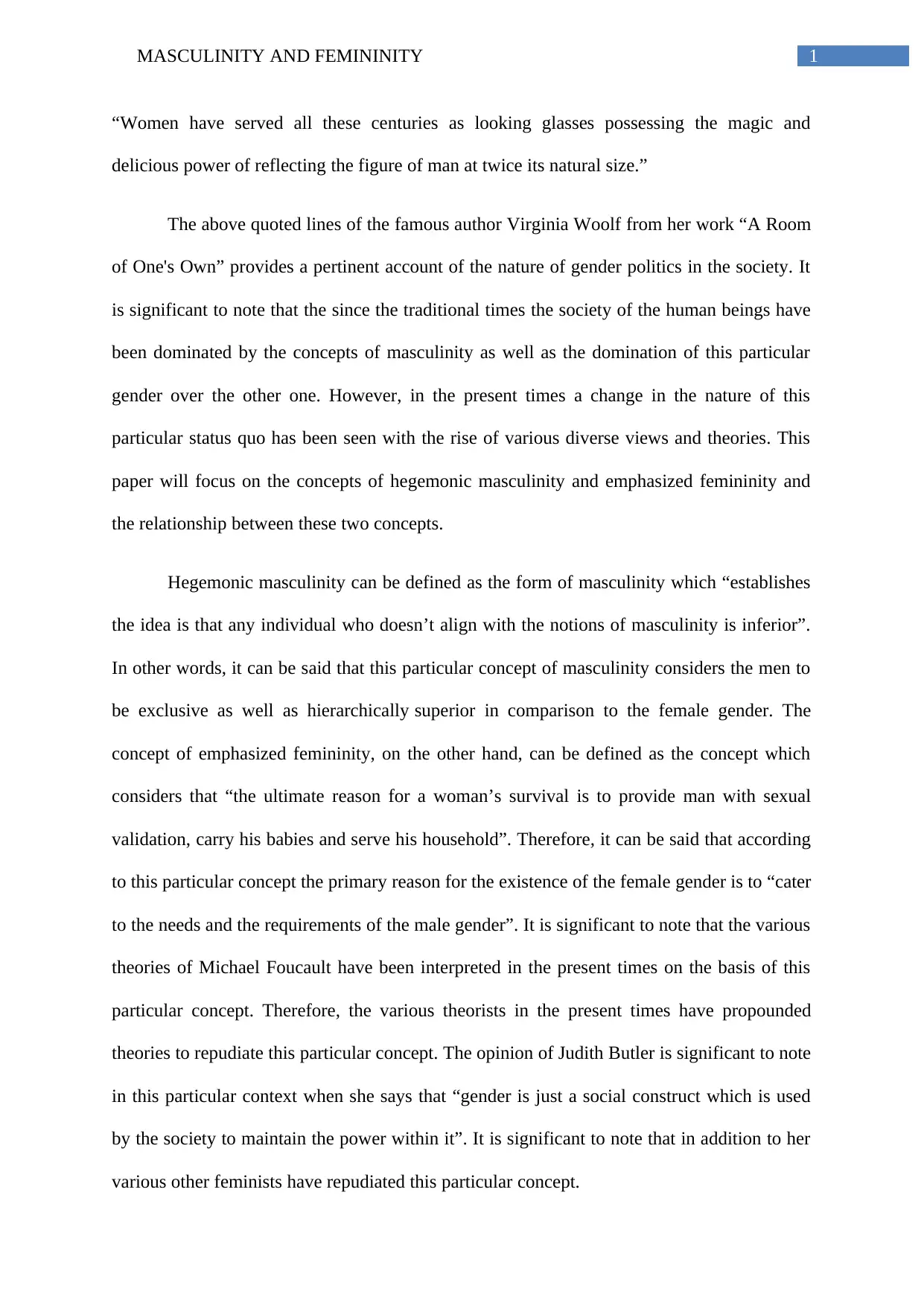
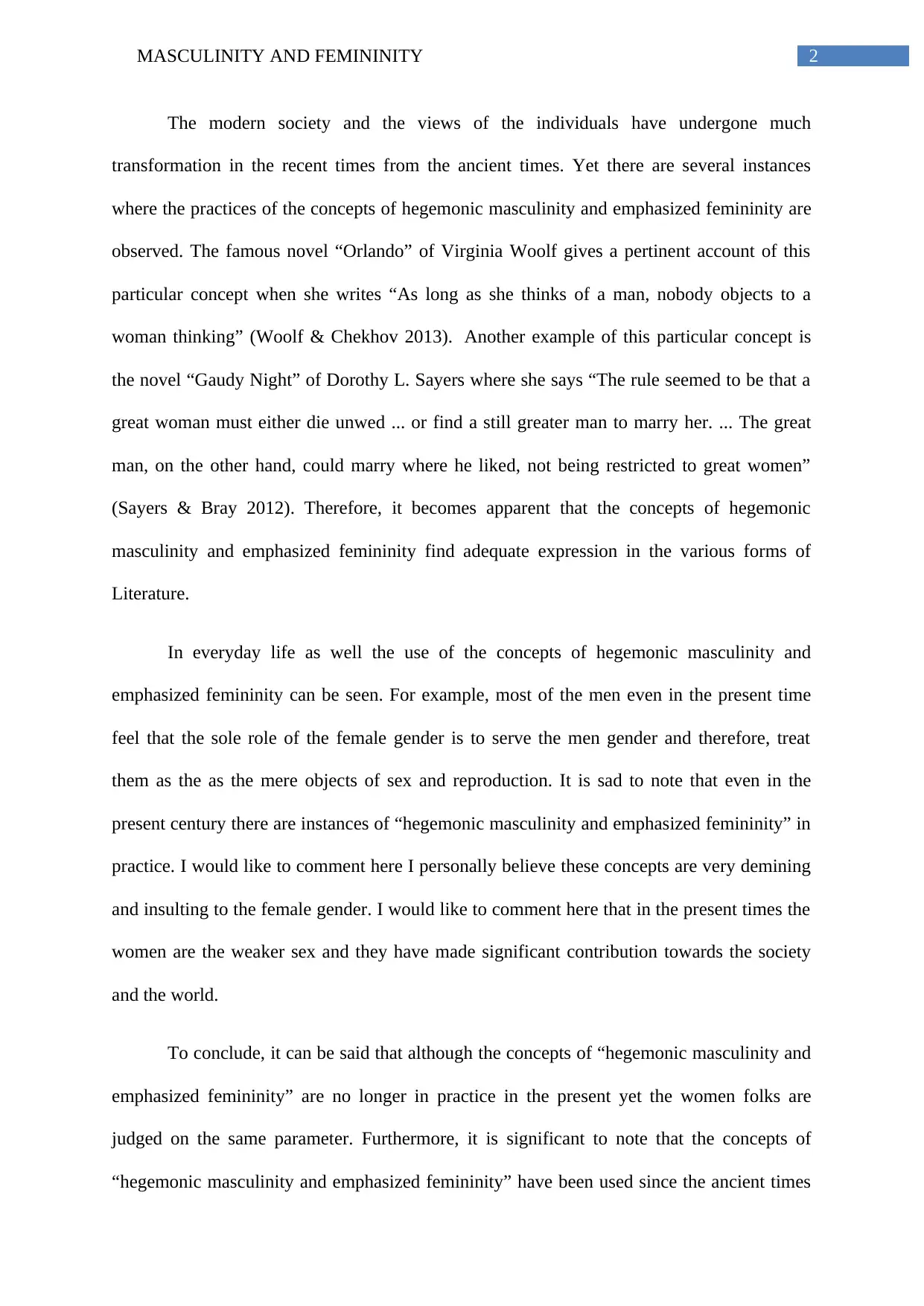

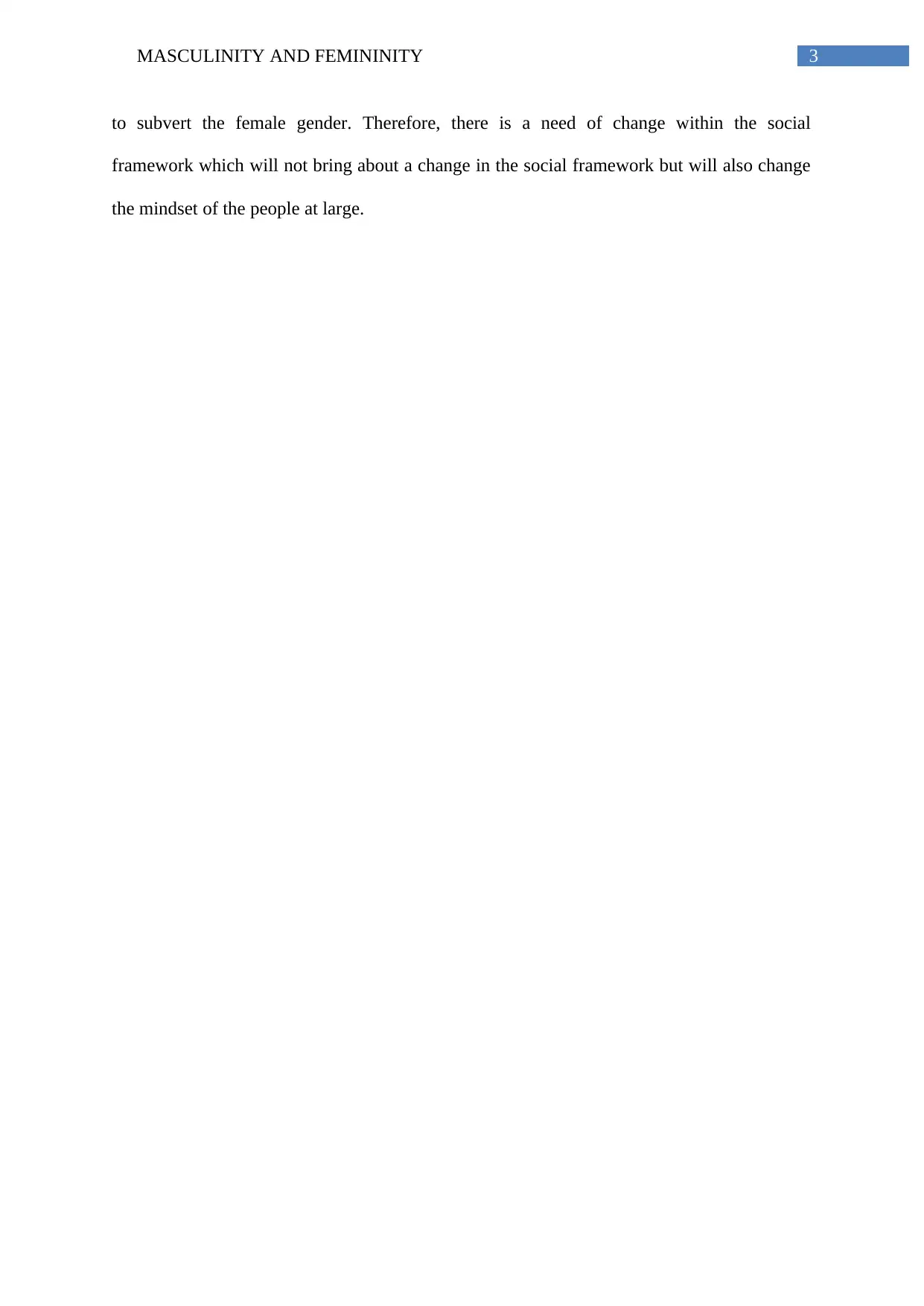
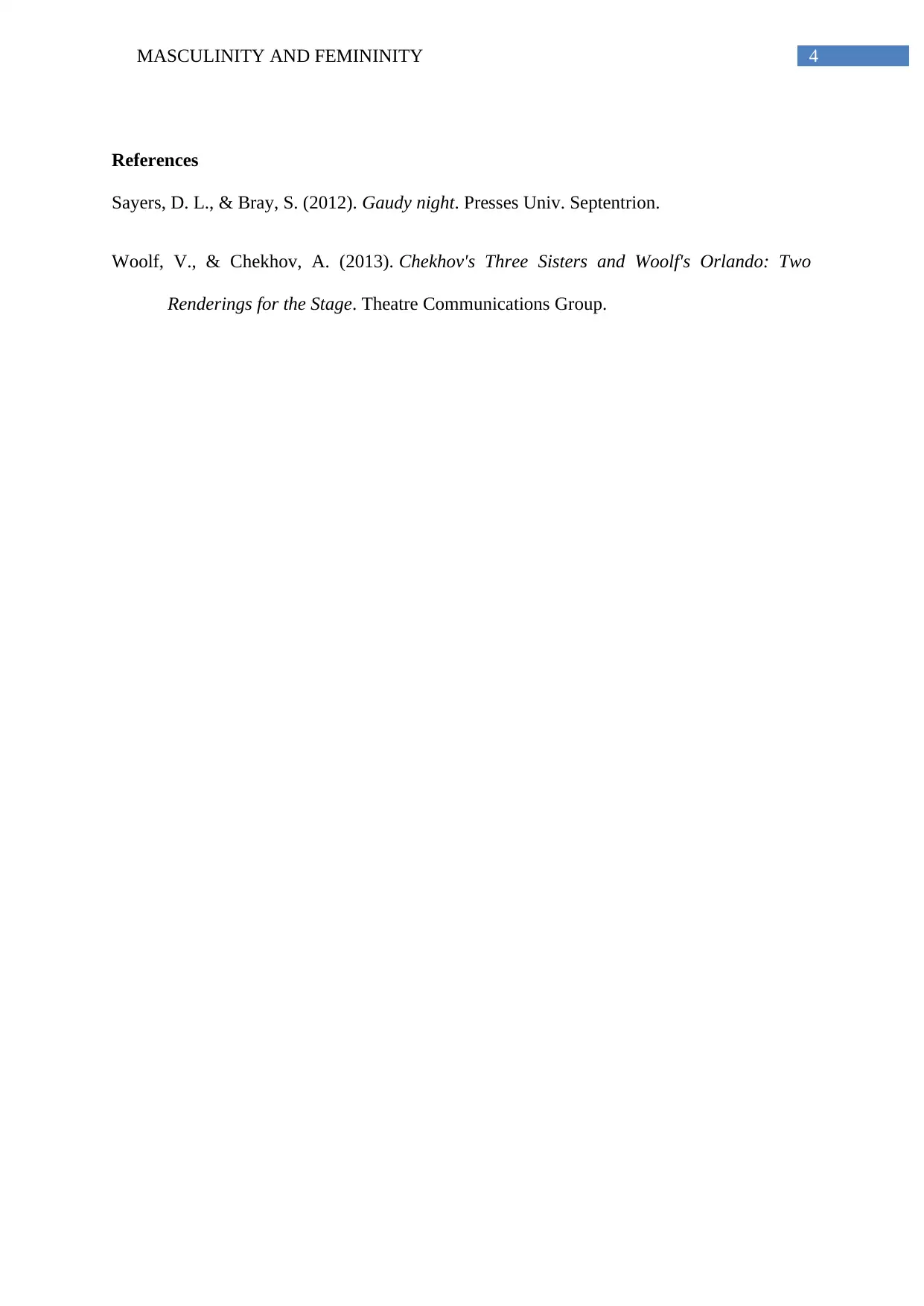






![[object Object]](/_next/static/media/star-bottom.7253800d.svg)